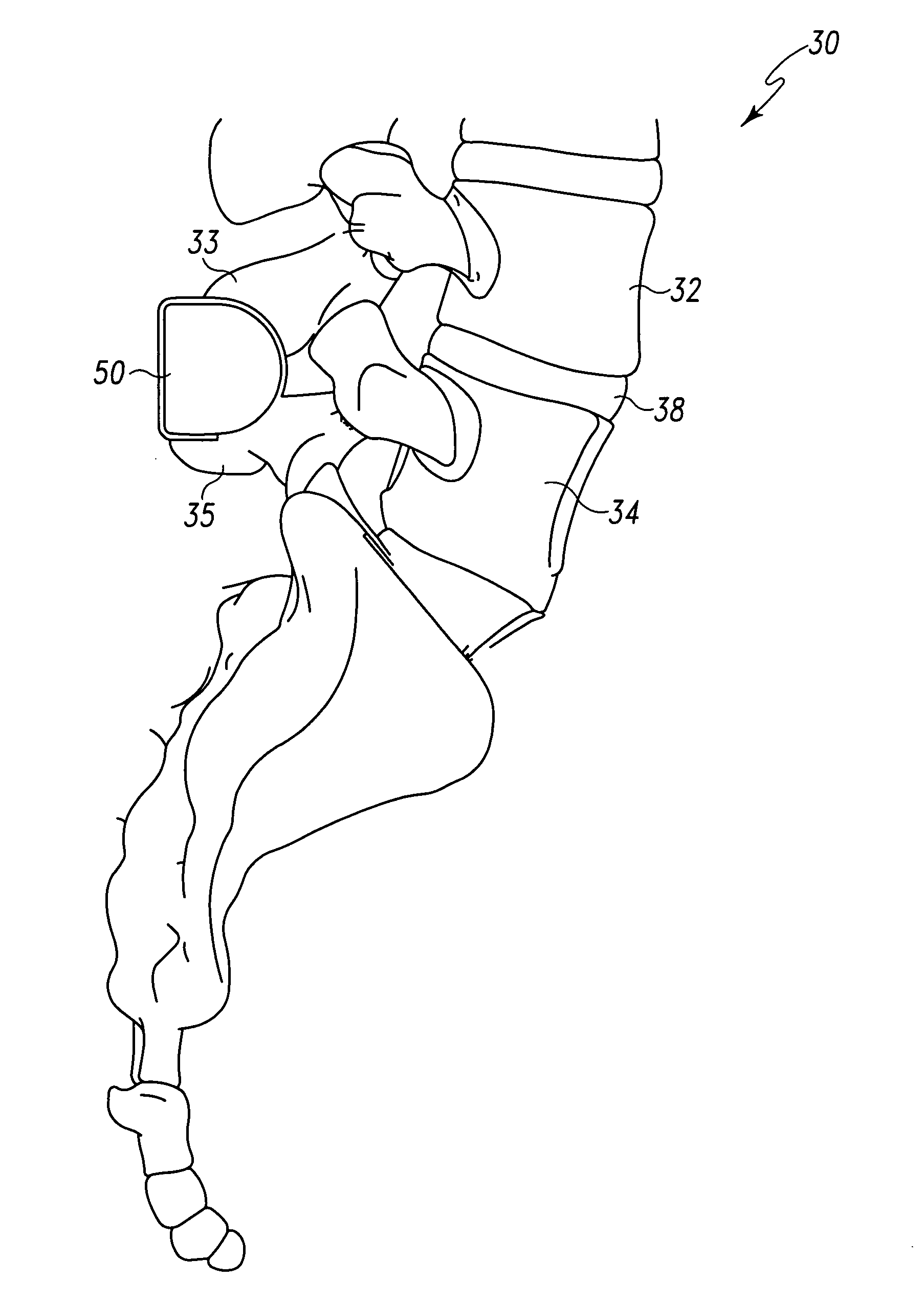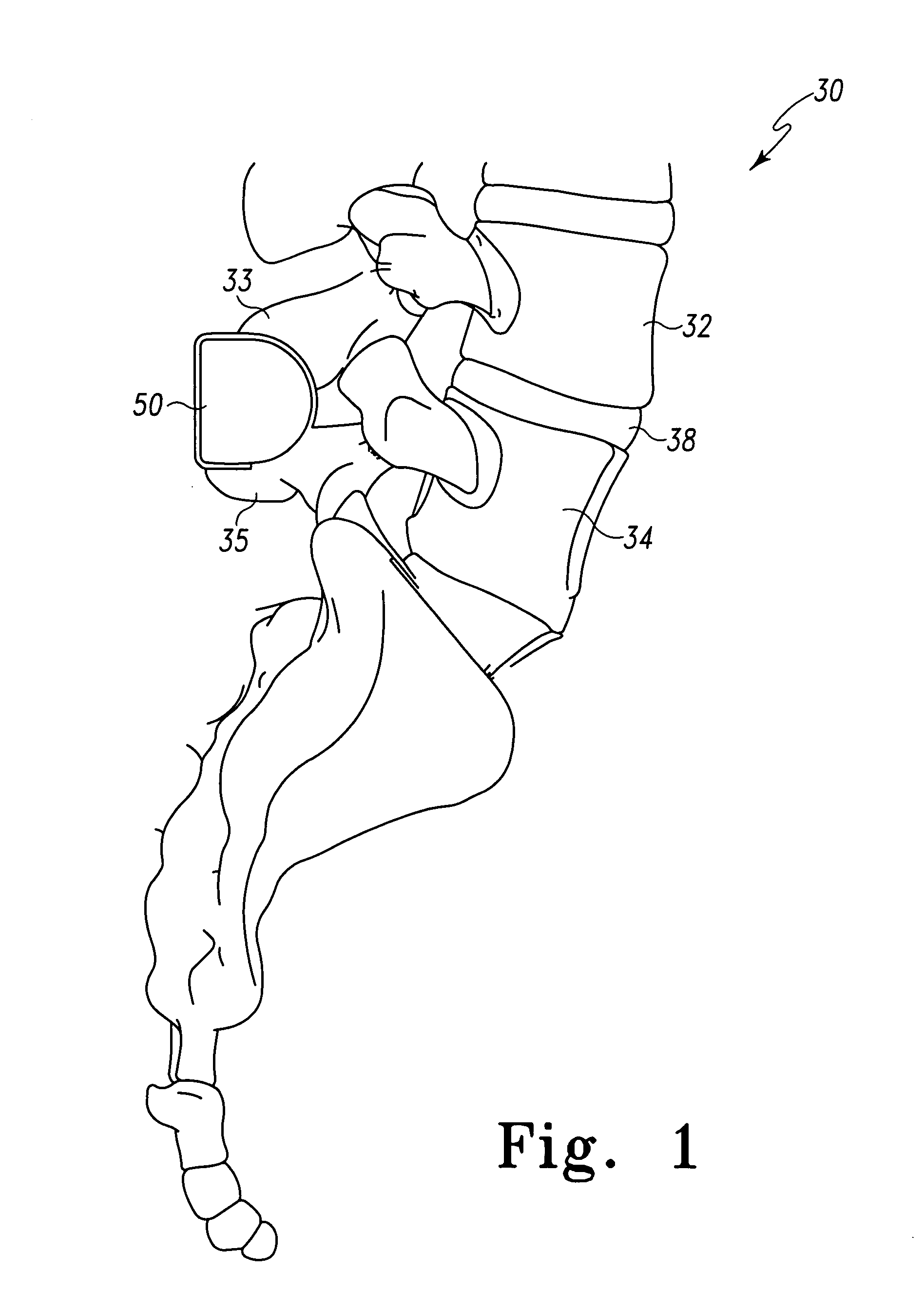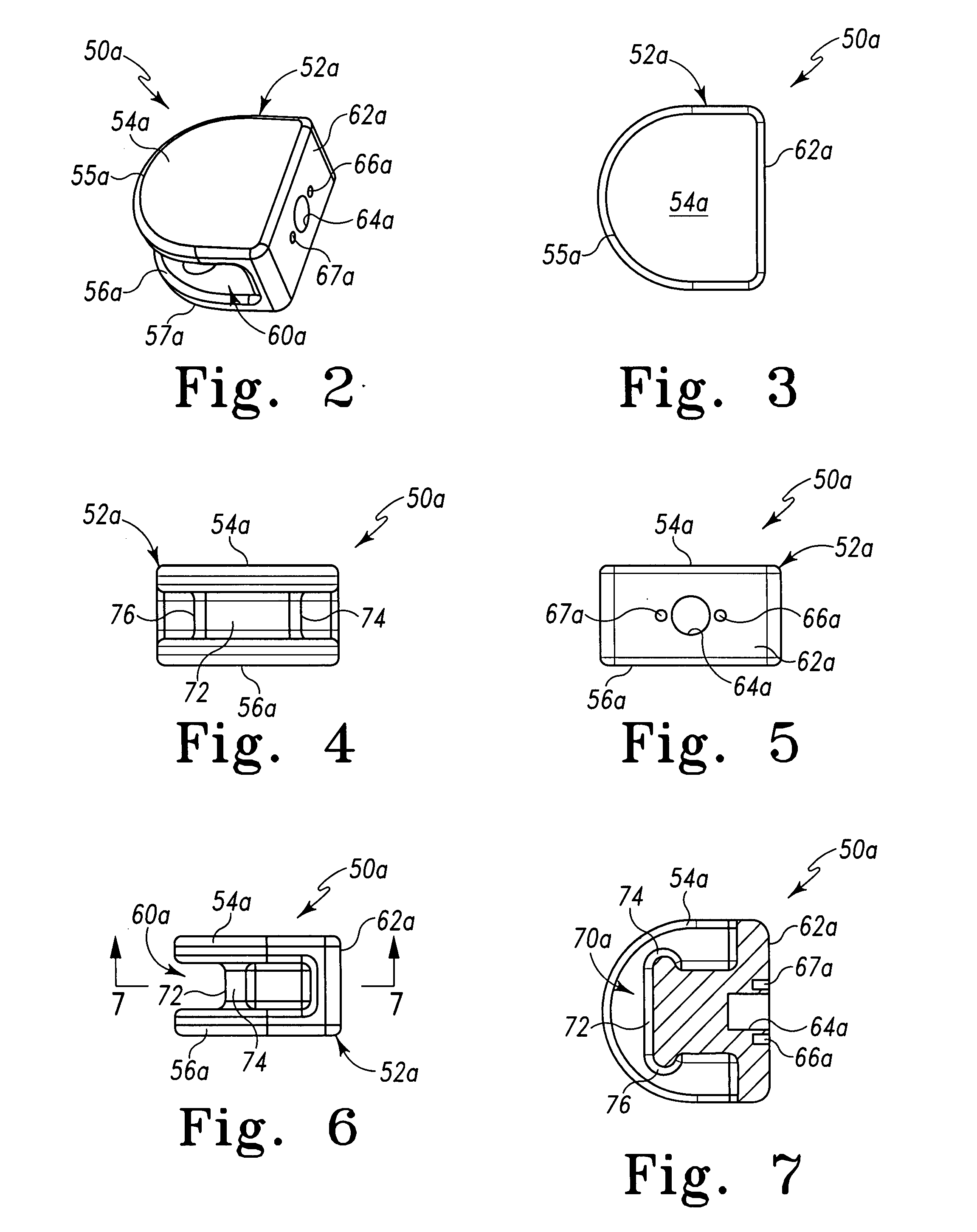Stenotic device
- Summary
- Abstract
- Description
- Claims
- Application Information
AI Technical Summary
Benefits of technology
Problems solved by technology
Method used
Image
Examples
Embodiment Construction
[0042]FIG. 1 depicts the lumber region 30 of a human spine. A bony spinal protrusion spacer, spinous process spacer, interlaminar spacer, or inter-joint spacer spinous process spacer 50, representing all embodiments of a bony spinal protrusion spacer according to the principles presented herein, is shown situated between the spinous processes 33 and 35 of respective adjacent vertebrae 32 and 34. A disc 38 is naturally disposed between the vertebrae 32, 34. It should be appreciated that while the present bony spinal protrusion spacer 50 is shown situated between spinal processes 33 and 35, the present bony spinal protrusion spacer 50 may be used as an interlaminar, interbody, or interbony spinal protrusion spacer. As such, while the present bony spinal protrusion spacer 50 is shown and described in relation to the spinal processes of adjacent vertebrae, the bony spinal protrusion spacer may be used as an interlaminar, interbody or interbony spinal protrusion spacer and the principles...
PUM
 Login to View More
Login to View More Abstract
Description
Claims
Application Information
 Login to View More
Login to View More - R&D
- Intellectual Property
- Life Sciences
- Materials
- Tech Scout
- Unparalleled Data Quality
- Higher Quality Content
- 60% Fewer Hallucinations
Browse by: Latest US Patents, China's latest patents, Technical Efficacy Thesaurus, Application Domain, Technology Topic, Popular Technical Reports.
© 2025 PatSnap. All rights reserved.Legal|Privacy policy|Modern Slavery Act Transparency Statement|Sitemap|About US| Contact US: help@patsnap.com



